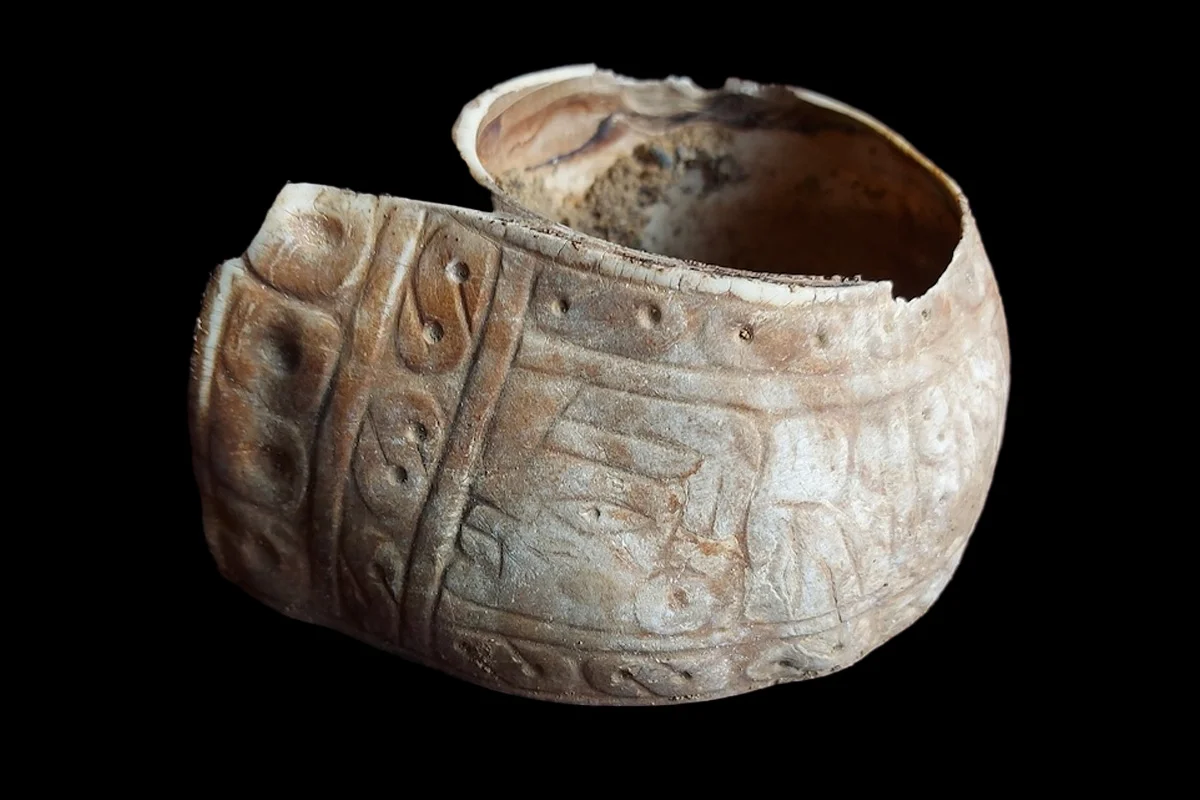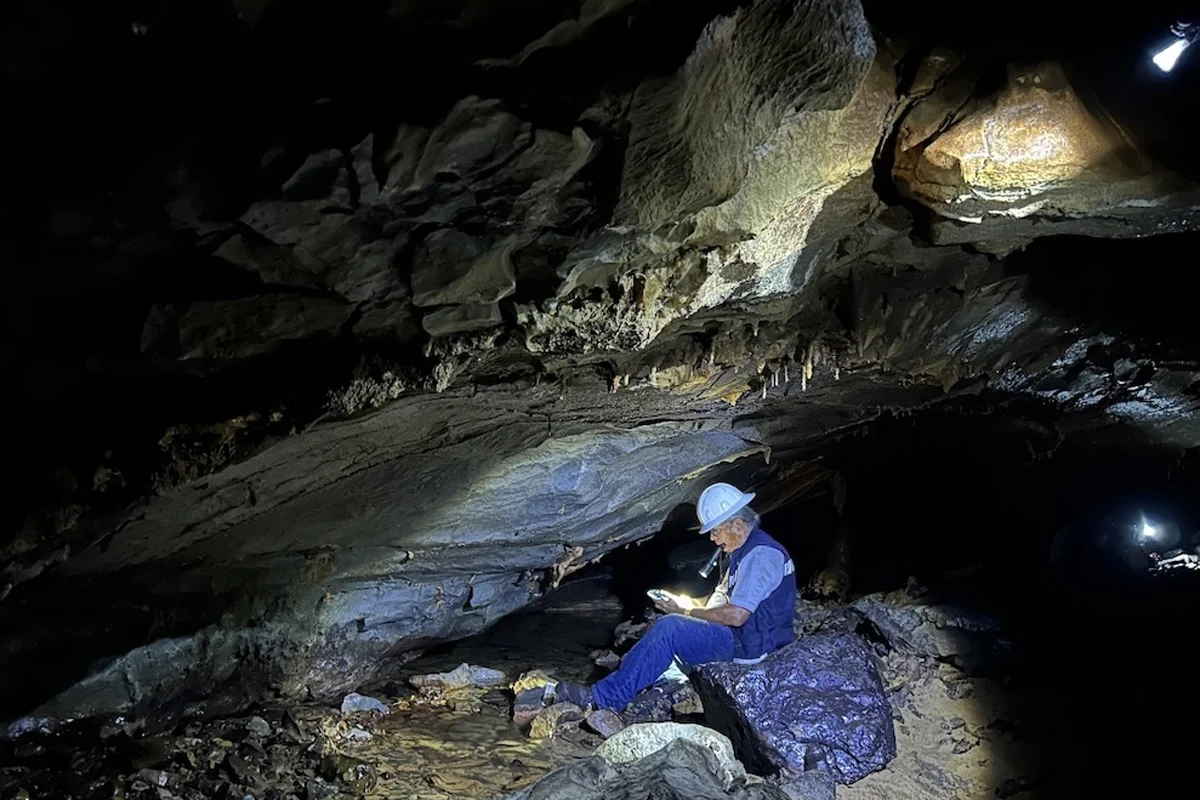A mapping project of Tlayócoc Cave, located in the mountains of Guerrero, Mexico, has led to the discovery of ritual offerings deposited by an extinct group of the Tlacotepehua people.
The offerings were initially discovered by Adrián Beltrán Dimas and Yekaterina Katiya Pavlova, who had been mapping the regions caves over several years.
On a mapping expedition to Tlayócoc Cave, the pair had reached the lowest level of the cave interior, where they found a new submerged opening that led to a large unexplored chamber.
Intentionally deposited into the stalagmites, they discovered shell bracelets with intricate engravings, a bracelet made from the shell of a giant snail, and scattered deposits of black stone discs that resemble pyrite mirrors.
They informed local authorities of their discovery, who invited the National Institute of Anthropology and History (INAH) to document and examine the artefacts and the context on which they were placed.

According to the INAH study, the stalagmites appear to have been intentionally reshaped into a spherical form, indicating an important ritual purpose.
In many Mesoamerican cultures, caves were revered as sacred spaces — gateways to the underworld (Mictlan), sources of life, and primordial places of origin. They were also believed to be the dwelling place of the gods, ancestors, and spirits who governed elemental forces and fertility.
INAH archaeologists catalogued a total of 14 artefacts, including three complete shell bracelets, a fragment of a shell bracelet, the shell of a giant sea snail (likely of the Strombus species), a charred piece of wood, and fragments from eight stone discs, two of which were whole.
The shell bracelets have anthropomorphic engravings that depict profile faces, as well as decorative elements such as xonecuilli (twisting motifs), zigzags, and circles.
According to Miguel Pérez from INAH: “Possibly the symbols and representations of figures on the bracelets are related to pre-Hispanic cosmogony regarding creation and fertility.”
Archaeologists believe the artifacts were deposited during the Postclassic period, between AD 950 and 1521, when the region was inhabited by the now-extinct Tlacotepehua people.
Header Image Credit : CINAH Guerrero
Sources : INAH





